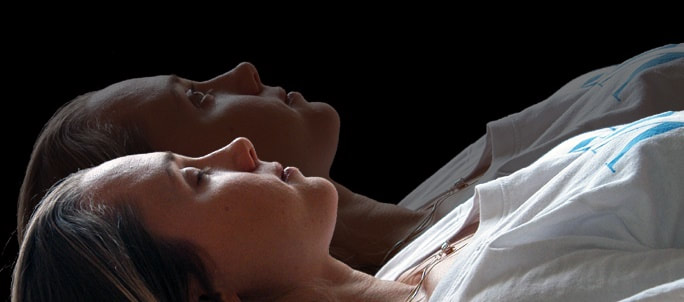AuthorLata Srinivasan Our senses control our emotions and therefore our lives. We cannot escape from the perceptions created by the senses and our conscious life is ruled by them. As a result our mind is always in a flux, and happiness eludes us. To achieve lasting joy and happiness we must access our subconscious. When we are awake our mind is busy reacting to the feelings created by the senses and therefore it becomes impossible to listen to our inner voice or subconscious. Yoga Nidra or Psychic Sleep is a practice where the senses are subdued and our conscious mind can directly access the subconscious.
Yoga Nidra is derived from two words - Yoga means single pointed awareness and Nidra is sleep. During the practice of Yoga Nidra, you seem to be sleeping, but your mind functions at a deeper level of awareness. Wolfgang von Goethe used the inspirations and intuitions from this state to solve problems arising in his work. In dreams occurring in this state, discoverer of benzene ring realized the circular structure from the image of a serpent eating its own tail. Bohr saw the structure of the atom in his dreams, and Einstein propounded the theory of relativity. Practicing Yoga Nidra Yoga Nidra is a guided practice which generally lasts for twenty to forty minutes, depending on whether you are a beginner or an advanced practitioner. You have to listen to instructions and follow them mechanically without thinking about the logic and rationale behind the instructions. You must suspend critical thinking. You can listen to a recording of guided Yoga Nidra. During the first stage of Yoga Nidra the mind is focused on external sounds. If all sensory impressions are forcibly excluded, the mind becomes restless and disturbed. Therefore, the mind is directed towards external sounds. You have to listen to the external sounds and move from one source to another. Your attitude should be that of a witness. After some time the mind slowly withdraws from the outside stimuli and automatically becomes quiet. Resolve or sankalpa During this stage you must think of a resolve or sankalpa. Your resolve should be precise and clear, otherwise it will not penetrate the subconscious mind. The resolve can be anything as long as it’s not frivolous. Once you have chosen a sankalpa you must not change to another. Don’t expect results overnight. Time is required depending on the nature of the resolve and the degree to which it is planted in the mind. The result depends on your sincerity and deep felt need to attain the goal of your sankalpa. Rotation of consciousness The next stage is rapid rotation of consciousness through the different parts of the body. The rotation of consciousness in Yoga Nidra proceeds in a definite sequence, beginning with the right thumb and ending with the little toe of the right foot; rotation from the left thumb to the little toe of the left foot. Subsequent rotations proceed from the heel to the back of the head, and from the head and individual facial features back to the legs. Awareness of the breath After these rotations of consciousness have been completed, physical relaxation is continued and completed by drawing attention to the breath. In this practice one simply maintains awareness of the breath; there should be no attempt to force or change it. One may watch the breath in the nostrils, in the chest, or in the passage between the navel and the throat. Ending the practice The practice of Yoga Nidra ends by repeating your resolve. This direct order from the conscious mind to the unconscious enables you to radically change your attitude, behavior and destiny. It is very important that the resolve be stated clearly and positively. This will give the mind strength and a positive outlook. You should have sincere faith in the resolve. This faith strengthens the effect of the resolve on the unconscious mind, so that the resolve will become a reality in your life. The practice of Yoga Nidra is concluded by gradually bringing the mind from the condition of psychic sleep to the waking state.
1 Comment
|
Please note that most of the articles have a "Read More" break, which is sometimes hardly visible.
It is located at the bottom of visible part of the article, on the right side. To continue reading the article, click on that link. This page may contain affiliate links meaning we earn a commission if you use those links.
We only recommend pages we appreciate and trust. Archives
March 2023
Categories
All

|
For guest posts or placing ads on our website, please use the contact form on the 'About/Contact Us' page.


 RSS Feed
RSS Feed

